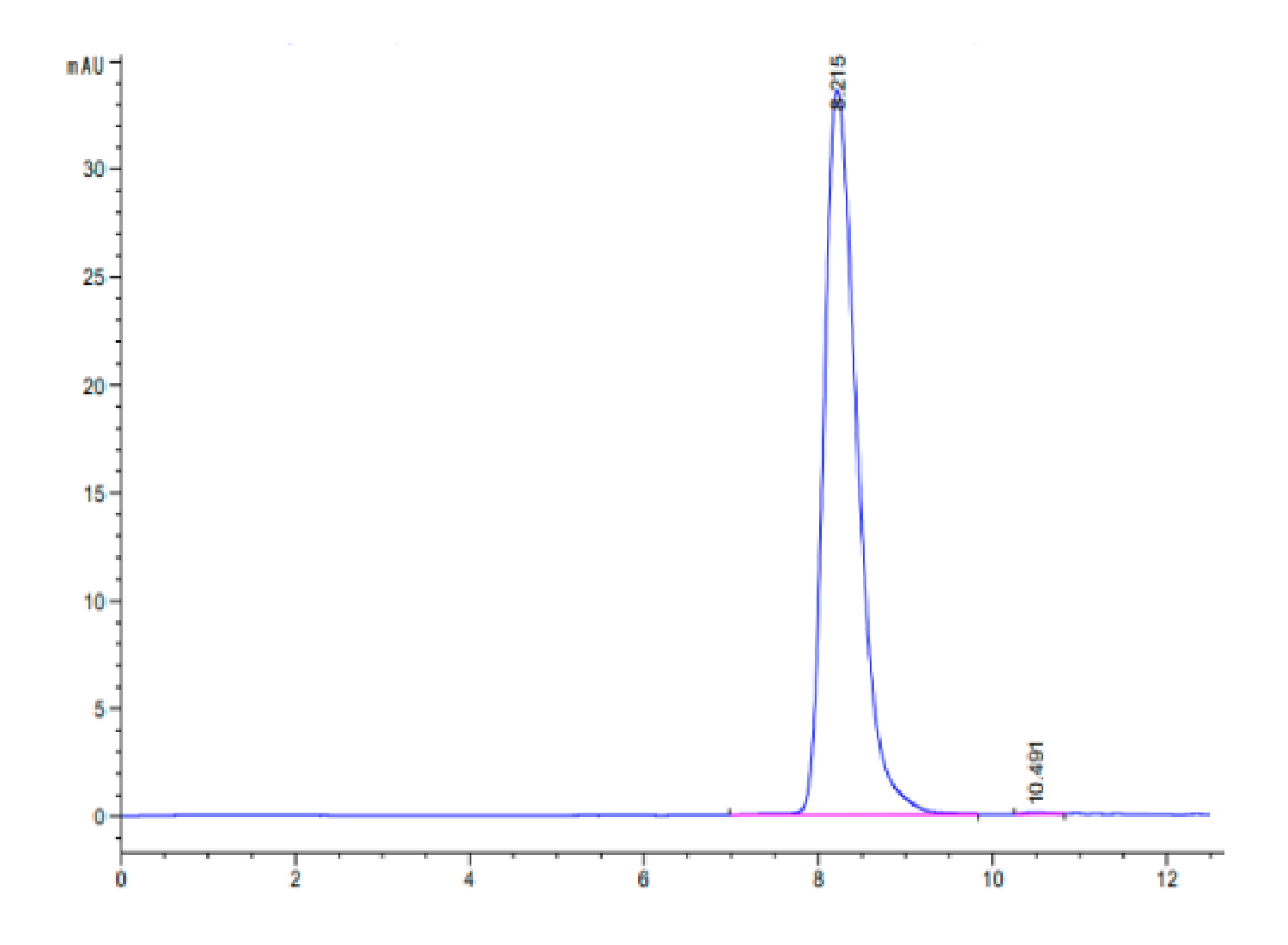| Weight | 1 lbs |
|---|---|
| Dimensions | 9 × 5 × 2 in |
| accession | XP_014979566.2 |
| express system | HEK293 |
| product tag | C-His |
| purity | > 95% as determined by Tris-Bis PAGE;> 95% as determined by HPLC |
| background | Carcinoembryonic antigen-related cell adhesion molecule 6 (CEACAM6) belongs to the human carcino-embryonic antigen (CEA) family. Numerous lines of studies have indicated that altered expression of CEACAM6 may have a role in carcinogenesis and development. |
| molecular weight | The protein has a predicted MW of 32.73 kDa. Due to glycosylation, the protein migrates to 55-70 kDa based on Tris-Bis PAGE result. |
| available size | 100 µg, 500 µg |
| endotoxin | Less than 1EU per μg by the LAL method. |
Cynomolgus CEACAM-6/CD66c Protein 2896
$270.00 – $900.00
Summary
- Expression: HEK293
- Pure: Yes (HPLC)
- Amino Acid Range: Gln35-Gly320
Cynomolgus CEACAM-6/CD66c Protein 2896
| protein |
|---|
| Size and concentration 100, 500µg and lyophilized |
| Form Lyophilized |
| Storage Instructions Valid for 12 months from date of receipt when stored at -80°C. Recommend to aliquot the protein into smaller quantities for optimal storage. Please minimize freeze-thaw cycles. |
| Storage buffer Shipped at ambient temperature. |
| Purity > 95% as determined by Tris-Bis PAGE |
| target relevance |
|---|
| Carcinoembryonic antigen-related cell adhesion molecule 6 (CEACAM6) belongs to the human carcino-embryonic antigen (CEA) family. Numerous lines of studies have indicated that altered expression of CEACAM6 may have a role in carcinogenesis and development. |
| Protein names Carcinoembryonic antigen-related cell adhesion molecule 6 (Non-specific crossreacting antigen) (Normal cross-reacting antigen) (CD antigen CD66c) |
| Gene names CEACAM6,CEACAM6 NCA |
| Protein family Immunoglobulin superfamily, CEA family |
| Mass 9606Da |
| Function Cell surface glycoprotein that plays a role in cell adhesion and tumor progression (PubMed:10910050, PubMed:11590190, PubMed:1378450, PubMed:14724575, PubMed:16204051, PubMed:2022629, PubMed:2803308, PubMed:8776764). Intercellular adhesion occurs in a calcium- and fibronectin-independent manner (PubMed:16204051, PubMed:2022629). Mediates homophilic and heterophilic cell adhesion with other carcinoembryonic antigen-related cell adhesion molecules, such as CEACAM5 and CEACAM8 (PubMed:11590190, PubMed:16204051, PubMed:2022629, PubMed:2803308, PubMed:8776764). Heterophilic interaction with CEACAM8 occurs in activated neutrophils (PubMed:8776764). Plays a role in neutrophil adhesion to cytokine-activated endothelial cells (PubMed:1378450). Plays a role as an oncogene by promoting tumor progression; positively regulates cell migration, cell adhesion to endothelial cells and cell invasion (PubMed:16204051). Also involved in the metastatic cascade process by inducing gain resistance to anoikis of pancreatic adenocarcinoma and colorectal carcinoma cells (PubMed:10910050, PubMed:14724575). |
| Subellular location Cell membrane; Lipid-anchor, GPI-anchor. Apical cell membrane. Cell surface. Note=Localized to the apical glycocalyx surface. |
| Tissues Expressed in neutrophils (PubMed:1378450). Expressed in columnar epithelial and goblet cells of the colon (PubMed:10436421). Expressed in numerous tumor cell lines (at protein level) (PubMed:16204051). |
| Structure Homodimer; homodimerizes via its Ig-like V-type domain. Heterodimer with CEACAM8; heterodimerizes via its Ig-like V-type domain. |
| Post-translational modification Glycosylated. |
| Domain Th |
| Target Relevance information above includes information from UniProt accession: P40199 |
| The UniProt Consortium |
Data
 |
| The purity of Cynomolgus CEACAM-6 is greater than 95% as determined by SEC-HPLC. |
 |
| Cynomolgus CEACAM-6 on Tris-Bis PAGE under reduced condition. The purity is greater than 95%. |
Publications
Publications
| pmid | title | authors | citation |
|---|---|---|---|
| We haven't added any publications to our database yet. | |||
Protocols
| relevant to this product |
|---|
Documents
| # | ||
|---|---|---|
| Please enter your product and batch number here to retrieve product datasheet, SDS, and QC information. | ||














